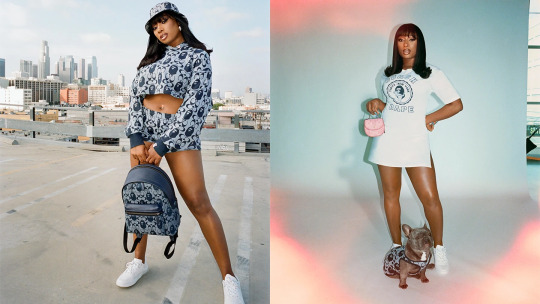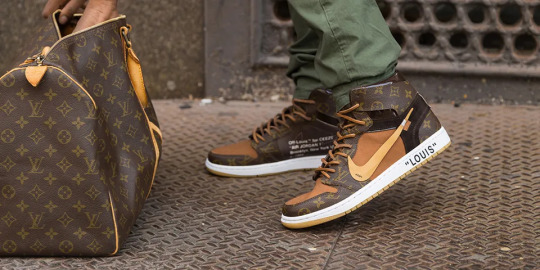#Buy Now Pay Later Market Trends
Text

#Buy Now Pay Later Market#Buy Now Pay Later Market Size#Buy Now Pay Later Market Trends#Buy Now Pay Later Market Share#Buy Now Pay Later Market Growth
0 notes
Text
Buy Now Pay Later Platforms Market is Estimated to Witness High Growth Owing to Increasing Consumer Demand

The buy now pay later (BNPL) platforms market allows consumers to purchase goods and pay for them in installments interest-free, without requiring credit checks or long application processes. BNPL platforms provide flexibility and convenience to shoppers and have gained popularity among millennials and Gen Z consumers. Key BNPL players provide various payment plans ranging from 4 interest-free payments over 6 weeks to paying back within 3-6 months with no additional fees. This enables consumers to manage their cash flows effectively and avoid interest charges associated with credit cards. The increasing popularity of e-commerce and growing need for flexible payment solutions among consumers are fueling the demand for BNPL platforms.
The Global Buy Now Pay Later Platforms Market is estimated to be valued at US$ 17.72 Bn in 2024 and is expected to exhibit a CAGR of 10% over the forecast period 2024 to 2031.
Key Takeaways
Key players: Key players operating in the buy now pay later platforms market include Baxter International Inc., ICU Medical. Inc, B. Braun Melsungen Ag, Grifols, S.A., Fresenius Kabi USA, LLC, Vifor Pharma Management Ltd, JW Life Science, Amanta Healthcare, Axa Parenterals Ltd, and Salius Pharma Private Limited, Pfizer, Inc, Otsuka Pharmaceutical Co., Ltd, Ajinomoto Co., Inc., B. Braun Melsungen AG, Soxa Formulations & Research Pvt.Ltd, Sichuan Kelun Pharmaceutical Co Ltd.
Key opportunities: Growing e-commerce sales and social commerce trends are opening Buy Now Pay Later Platforms Market Demand Moreover, opportunities exist in developing nations with increasing internet and smartphone penetration.
Global expansion: Major BNPL players are expanding globally to benefit from the untapped growth potential. For instance, Afterpay and Klarna have extended their services across North America, Europe, Asia, and other regions.
Market drivers: Increasing consumer Buy Now Pay Later Platforms Market Size And Trends In addition, pay later capabilities on shopping apps and buy now pay later at brick and mortar stores are fueling the adoption of BNPL payment methods among consumers.
PEST ANALYSIS
Political: Regulations around consumer lending are constantly evolving with new laws around transparency and responsible lending practices. This affects the operations of buy now pay later platforms.
Economic: A rise in discretionary spending and consumer confidence has positively impacted the buy now pay later market. However, an economic downturn could see a reduction in purchases made using these platforms.
Social: Younger consumers are more comfortable with the idea of paying for purchases over time and instalments. Buy now pay later options address changing consumption patterns and preferences.
Technological: Advancements in payments technology and the rise of smartphones have enabled new platforms in the online and offline space. Real-time approvals, syncing with bank accounts and virtual cards are driving growth.
Geographical concentration
In terms of value, the buy now pay later platform market is currently concentrated in North America and Europe. The US and UK markets have seen strong growth due to a large young population and greater adoption of online shopping in these countries. Australia has also emerged as an important early adoption market.
Fastest growing region
The Asia Pacific region excluding Australia is projected to be the fastest growing market for buy now pay later platforms from 2024 to 2031. Rising incomes, expanding middle class and increasing digital payments penetration in countries like India and China offer significant untapped potential. Buy now pay later also provides these markets an innovative credit access point.
Get More Insights On, Buy Now Pay Later Platforms Market
#Buy Now Pay Later Platforms Market Demand#Buy Now Pay Later Platforms Market Trends#Buy Now Pay Later Platforms Market Size#Buy Now Pay Later Platforms#Buy Now Pay Later Platforms Market
0 notes
Text
#Vietnam Buy Now#Pay Later Market#Market Size#Market Share#Market Trends#Market Analysis#Industry Survey#Market Demand#Top Major Key Player#Market Estimate#Market Segments#Industry Data
0 notes
Note
You do know that FBBC are still heavily producing and distributing beer, right? Before you start patting yourself on the back that the original brewery/land is being sold, you might want to get clued into the fact that distribution has been expanded to San Antonio and recently to Houston. The company and brand are positioning themselves to expand further. Don't think they will go back to the cute craft brewery, but as you have pointed out, craft breweries are not that profitable. Looks like they are going for a stronger business model.
You go on about the whole YANA thing. I have never understood why a select few in the fandom actually became jealous about a charity? Seems so small minded and petty. Regardless, YANA still exists and continues to do good things.
Yes I know about their distribution, I'm the one who pointed out 5 years ago all those bottling and canning equipment and the end products weren't for the taproom customers but meant for distribution because the Ackles were trying to go big because they want to make actual profit despite originally claiming that they would only sell beer at the brewery (X).
What did you think the $1000 membership package was about? To get SPN fans to regularly go to FBBC to keep it afloat so they can keep making beer on site and then ship off site. Quite a turnaround when Gino cast dispersion toward SPN fans and said there will be no beer named after a "corny tv show" (X)
According to Gino, they plan to resume producing their own beer again once they find a location in Austin.

After they bought these top on the line brewing equipment and are now selling. That sounds like a "stronger business model" to you?

Surely you don't think the Ackles are going to sell off all the
brewery equipment only to turn around and buy new equipment for the alleged 2nd location? At best they should just open a small scale taproom and put Gino in there as the glorified bar tender.
Do you know people who had their beer made by somebody else? I have. They have to pay for everything, or make compromises. There is no in between. A specific yeast strain the contractors don't use? Then you're going to have to pay for that, and the labor to keep it going, or do it yourself. Oh wait, they can't because they closed
down FBBC.
Breweries don't close because they'll make more money from contract breweries, if that's the case then why open your own brewery in the first place?
Let me break it down using another real life example:
If parents have a couple of kids going to the same college and overlap each other, instead of paying dorm fees or renting an apartment, they would buy a townhouse for their child/ren and rent out rooms to other students, which pays for the mortgage. Then when the last child graduates, they sell the house for a profit.
See the difference between owning a brewery that doubles as a contract brewery (your house) vs paying everything to a contract brewery (college)?
What's going on is there is a saturation of craft breweries. It's like in the late 90s when there was a huge surge in openings of comic shops. Every collector dreamed of running his own place and thought a love for the product was enough to be successful. The market became saturated. A couple years later, the trend reversed and it seemed another shop was closing every other week. The difference in making it or not largely rested on whether the owner had the skill set to run a business. Foresight. Customer relations. General business principles. And of course, the ones who had adequate funding. The market decided who made it and who didn’t.
That's what is going on in the current beer industry. The hobbyists
who thought they could be successful because they loved brewing but lacked the skill set to run a business are beginning to fall.
LOL nobody is jealous of YANA, people continue to be amused by it because of how badly it was executed and then failed. If YANA still exist and continues to do good thing, it's only because Jared bailed it out after both Misha and Jensen abandoned the public promise as mentioned here and here.
I remember back in my day a craft beer was “hey there’s a beer that’s $3.50 a bottle instead of $2 and it’s way better!”
Nowadays it’s “this craft beer is sourced with water collected from the Himalayas by free range howler monkeys and filtered through the wings of butterflies. Oh and we can’t bother to be original so it’s an IPA loaded with hops. $8 please”.
36 notes
·
View notes
Note
do you have any online clothing retailer recommendations?
I bought most of my stuff in stores but I can also recommend About You. They have a big selection of clothes for what I'd say reasonable prices.
Etsy also has a lot of cute stuff but tends to be on the pricier side in my experience.
Otherwise if you're looking for underwear or swimsuits made for gnc ppl I've heard good things about origami customs.
Obviously I would not recommend buying stuff from Amazon or fast fashion labels like Shein but if that's all you can afford, go ahead.
And sadly I don't think it's possible to completely avoid child labor and slavery in the clothing market so make sure you look into how to properly wash your clothes and don't buy too much new stuff.
6 notes
·
View notes
Text
character introductions: Oenith


17 years old at book 1 ch1, mid-20s by series end
(it's pronounced "Ennith" and if I ever publish FS, will probably be one of the couple of names that gets changed slightly because the original almost feels too close to me to publish lmao)
Not sure of her actual birthday but I know it’s early/mid summer, she’s almost a year younger than Therien
she/her
Probably pan? Idk for sure with her though. She’s definitely like…attracted to people and cares a lot about how she’s perceived by people she’s attracted to, but she also thinks she has more important things to do and doesn’t want to “waste” her time on romance
5’4”, maybe 5’6” later in the series
Description: Blonde hair, a little lighter than Therien’s but not as light as Leithe’s was, and bright blue eyes. She usually wears her hair up: styles that are practical, but show off that she’s capable of doing complicated things with her hair, even once she cuts it shorter in her teens. She has a similar skin tone to Therien, but unlike her, tends to tan instead of burn, and she has a mole underneath one eye. She typically wears practical clothes in styles common to Rhorn: skirts with deep pockets, blouses of sturdy fabric, overdresses and sturdy boots. Her clothes are as well-kept as they can be: things that were once nice, afforded on her father’s cavalry officer’s pay, before he retired. Now, they’re a bit threadbare or being replaced with secondhand clothing, as she’s getting taller and putting on more muscle, her arms and back strong from hard labor and her hands calloused.
She’s incredibly practical and seems very mature, though honestly she’s just as unsure as Therien, she just copes with the uncertainties of entering adulthood during a brewing war in a very different way. She finds comfort in having plans for things, in being able to take care of herself. Her father’s a good man, she’d say, but she can’t rely on him: drinking away what little pension they get and his mind as well, so that she has to work enough for the both of them. She’s not above using his good reputation as a cavalry officer to land herself jobs protecting the crops and carriages of paranoid nobles. She’s often at odds with Therien, finding her daydreaming and idealism childish: she wouldn’t admit it even to herself, but she doesn’t really enjoy having to grow up so fast. She says she has no time for anything frivolous or not strictly necessary, but she loves finer things like the hair ribbons she won’t linger on at the market, or the trends of nobles’ dresses. She has a horse named Coll who she trained herself, and at first borrows her father’s sword for her jobs, but eventually buys a second sword of her own and uses them both.
Goals/arc: Instead of growing up, her story is more about learning to slow down and figure out the kind of thing she enjoys. Her feigned maturity eventually mellows into the real thing, and she loses a lot of her defensiveness. Joining the Shields after her father dies gives her a purpose and some sort of security, which allows her to take time to get to know people as friends (or something else) instead of contacts for potential jobs, and to lighten up as she starts to rely on the people around her.
tag list: @just-emis-blog @orions-quill @honeybewrites @leahnardo-da-veggie @robin-the-blind-sniper-rifle
4 notes
·
View notes
Text
Alternative Payment Methods (APMs) for Online Transactions
In the past decade, the world of online payments has witnessed a significant transformation. With the rise of e-commerce and the increasing preference for mobile shopping, customers now have more choices than ever when it comes to payment methods. This shift has led to the emergence of alternative payment methods (APMs) that offer customers greater convenience and flexibility. In this article, we will explore the different types of APMs, their popularity across the globe, the benefits of accepting these methods for businesses, and how to choose the best APMs for your business.
Understanding Alternative Payment Methods
Alternative payment methods refer to any form of payment that does not involve cash or traditional credit card systems like Visa, Mastercard, or American Express. These methods include domestic cards, digital wallets, bank transfers, prepaid cards, and more. Unlike traditional payment methods, APMs offer unique advantages such as enhanced security, faster processing times, and ease of use. They have become particularly popular for online transactions, with many countries seeing a significant shift towards APM usage.
Types of Alternative Payment Methods
Prepaid cards: Prepaid cards are loaded with funds by consumers and can be used for purchases until the balance is depleted. They are not directly linked to a bank account and are a popular choice for individuals who want to control their spending.
Cash-based payments: Cash-based payment methods allow customers to generate a barcode or unique reference number for their payment and then complete the transaction by paying in cash at a participating retail location. This method is particularly popular in regions with a large unbanked population.
Real-time bank transfers: Real-time bank transfers enable customers to make online payments directly from their bank accounts. This method offers instant settlement and minimal friction for customers, making it a convenient choice for many.
Direct Debit: Direct debit allows merchants to pull funds directly from customers' bank accounts for recurring payments. This method is commonly used for subscription-based services and offers a seamless and automated payment experience.
Domestic card schemes: Domestic card schemes operate similarly to global card schemes but are limited to specific markets. These schemes cater to the unique needs of consumers in their respective markets and often provide lower processing costs for merchants.
Electronic wallets (e-wallets): E-wallets allow customers to store funds digitally and use them for various transactions, both online and offline. They offer convenience, security, and often provide additional features like peer-to-peer transfers and cross-border payments.
Mobile wallets: Mobile wallets are digital wallets that are specifically designed to be used on mobile devices. Customers can load funds into their mobile wallets through various methods and make payments conveniently through their smartphones.
Digital wallets: Digital wallets are used to store payment card information securely and generate tokenized card numbers for each transaction. They offer a convenient and secure way to shop online without the need to enter card details repeatedly.
Buy now, pay later (BNPL): BNPL services allow customers to defer payments or split the cost of a purchase into installments. This method is gaining popularity for its flexibility and convenience, particularly for high-value purchases.
Cryptocurrencies and stablecoins: Cryptocurrencies like Bitcoin have gained attention in recent years, offering an alternative form of payment. Stablecoins, which are cryptocurrencies linked to fiat currencies or government bonds, aim to reduce volatility and make transactions easier.
Popular APMs Worldwide
The popularity of APMs varies across different regions and countries. Here are some notable trends:
North America
In North America, digital wallets have become the most popular payment method, surpassing credit and debit cards. Apple Pay and Google Pay are widely used, while services like PayPal and Venmo are gaining traction among the younger generation. APMs account for a significant portion of e-commerce transactions in the region.
South America
APMs are gaining ground in South America, with a projected increase in their usage for digital commerce transactions. Credit cards still dominate, but alternative online payment solutions, such as e-cash methods, are becoming more widespread. Cash on delivery is also popular, especially in countries with a large unbanked population.
Europe
In Europe, digital wallets have surpassed credit and debit cards as the preferred online payment method. Domestic debit cards, like Bancontact in Belgium and Cartes Bancaires in France, are popular alongside global card schemes. Bank transfer methods, such as iDEAL in the Netherlands and Przelewy24 in Poland, are also preferred by a significant number of consumers.
Africa
In Africa, mobile wallets have gained popularity due to the lack of bank branch infrastructure and a large rural population. Cash on delivery remains the preferred method, especially in Nigeria and South Africa. Digital wallets are also seeing growth, particularly in Kenya and Nigeria.
Middle East
Cash has traditionally been the dominant payment method in the Middle East. However, the region is experiencing a shift towards mobile wallets due to increased smartphone penetration and concerns over the transmission of cash during the pandemic. Mobile wallet adoption is supported by the expansion of international brands and government-backed payment networks.
Asia Pacific
China has its own domestic card scheme, UnionPay, which accounts for a significant portion of global card spending. Mobile payments, particularly through Alipay and WeChat Pay, are widely used in China. Other countries in the region, such as Singapore, Indonesia, and Thailand, have their own popular alternative payment methods, including GrabPay and OVO Wallet.
The Benefits of Accepting APMs for Businesses
Not accepting customers' preferred payment methods can have a negative impact on conversion rates and lead to shopping cart abandonment. Research shows that a significant percentage of consumers are deterred from completing a purchase if their preferred payment method is not available. By accepting a variety of APMs, businesses can improve customer satisfaction, increase conversion rates, and stay ahead of their competitors.
APMs offer several benefits for businesses:
Increased conversion rates: By offering a wide range of payment methods, businesses can cater to the preferences of different customer segments, leading to higher conversion rates and reduced shopping cart abandonment.
Improved customer experience: APMs provide convenience and flexibility for customers, allowing them to choose the payment method that suits their needs and preferences. This enhances the overall customer experience and fosters loyalty.
Expanded customer base: Accepting popular local and global APMs enables businesses to reach a wider customer base, including those who prefer alternative payment methods over traditional options.
Reduced fraud and chargebacks: Many APMs incorporate advanced security features, such as biometric authentication and tokenization, which help reduce the risk of fraud and chargebacks for businesses.
Access to valuable insights: APM providers often offer detailed transaction data and analytics, providing businesses with valuable insights into consumer behavior and preferences. This data can be leveraged to optimize marketing strategies and improve customer targeting.
Choosing the Best APMs for Your Business
Selecting the right APMs for your business requires a thorough understanding of your target market, customer preferences, and business requirements. Here are some steps to guide you in choosing the best APMs:
Research customer preferences: Conduct market research to identify the most popular payment methods among your target audience. Consider factors such as geography, demographics, and shopping habits to determine the most relevant APMs for your business.
Evaluate business needs: Assess your business requirements, including cost per transaction, setup and management complexity, regulatory compliance, and compatibility with your existing payment infrastructure. Choose APMs that align with your business goals and objectives.
Partner with the right providers: Work with payment service providers that offer comprehensive coverage of the APMs you wish to integrate. Ensure they have the necessary capabilities to support your business's growth and adapt to evolving customer preferences.
Test and optimize: Implement APMs in a phased approach and continuously monitor their performance. Analyze transaction data and customer feedback to identify any pain points or areas for improvement. Regularly optimize your APM strategy to maximize conversions and customer satisfaction.
By embracing the growing trend of APMs and selecting the right mix of payment methods for your business, you can enhance the payment experience for your customers and drive growth in your online sales.
Conclusion
Alternative payment methods have revolutionized the world of online transactions, offering customers greater convenience and flexibility. From digital wallets and mobile payments to real-time bank transfers and buy now, pay later services, APMs cater to a wide range of customer preferences. Businesses that embrace APMs can benefit from increased conversion rates, improved customer experience, and access to valuable insights. By understanding customer preferences, evaluating business needs, and partnering with the right providers, businesses can choose the best APMs to drive growth and success in the digital marketplace. Stay ahead of the competition by embracing the changing landscape of online payments and offering customers the payment methods they prefer.
#high risk merchant account#high risk payment gateway#offshore merchant account#payments#merchant account
3 notes
·
View notes
Text
By: Claire Lehmann
Published: Jul 7, 2023
In medieval times, it was common practice for the wealthy to buy indulgences from the church to atone for their sins. These payments, the church assured, meant the person paying would not remain in purgatory for too long and would later ascend into heaven.
A wealthy person could even buy indulgences for their family members or ancestors who were long dead. Today we think of ourselves as far more enlightened than our medieval forebears. We secular folk would never pay a class of clerics large sums of money to atone for our sins. Or would we?
In recent years, billions of dollars have flowed into investment funds that market themselves as providing “environmental, social and governance” impacts. In Australia, industry super funds lead this trend, with money pouring into funds that then invest in companies that promote green, social justice, equity, diversity and inclusion causes.
The basic idea behind ESG, which has been promoted by organisations such as the World Economic Forum, is that one can make a profit and “do good” at the same time. Investors argue they can contribute to a net-zero future while making solid returns, or contribute to social justice alongside their fiduciary duty.
Rating agencies and research firms issue ESG “scores” to companies that are then used by bodies who advise institutional and retail investors which organisations they should invest in. Because ESG has no standardised metrics or even standardised definitions, such scores can be massaged by those companies that have enough money to play the game.
An entire industry of consulting agencies and non-profits exists today to implement cosmetic changes within companies to boost their ESG scores. Such cosmetic changes may include sponsoring a float at the Gay and Lesbian Mardi Gras or offering paid leave for staff who wish to change their gender.
As I commented in these pages last year, “gender affirmation leave” is offered by our two biggest supermarkets, Coles and Woolworths, and contributes to these companies earning “gold- and platinum-tier” status by the Australian Workplace Equality Index – despite the fact both companies are simultaneously implicated in wage theft scandals.
Sometimes called “wokewashing”, the practice of buying virtue through ESG allows corporate entities to deflect attention away from their PR embarrassments, like Henry VIII’s Indulgences allowed him to go on indulging.
Such practices are called wokewashing because these changes usually do not go deep enough to really cause change within a large organisation. By sheer virtue of their size, our largest corporations often make mistakes that only a complete overhaul of management practices could possibly address.
Take BHP, for example. The biggest company in Australia, and largest mining company in the world, is now embroiled in one of the biggest wage theft scandals in history. Accused of underpaying 28,500 workers $430m in wages for deducting public holidays from leave entitlements, BHP is now supporting the Yes vote in the voice referendum and has pledged a $2m donation to the campaign. This pledge is likely to boost its ESG score, but whether it satisfies the workers who have been underpaid is yet to be seen.
It is not just the mining industry that seeks ESG redemption. The banking industry wants to buy its way into heaven as well. Following on the heels of the disastrous royal commission into the sector, the Big Four are all doubling down on ESG. NAB faced criminal charges in 2021 for failing to pay casual employees long-service leave entitlements, but this is offset by its sponsorship of Midsumma – Melbourne’s queer arts and cultural festival. Last year ANZ was fined $25m for misleading consumer practices, but it also announced it was offering its staff paid leave for a sex change.
Commonwealth Bank has been in hot water in recent years for breaching money-laundering laws and Westpac was required to pay a $1.3bn fine after 250 customers made transfers that were linked to child exploitation. Both organisations are atoning for these sins by campaigning for the Yes vote.
Almost every large corporation that has signed on to the Yes campaign for the voice referendum is embroiled in some kind of scandal that involves their core business. Whether Coles is underpaying its staff, or Rio Tinto is dealing with dozens of accusations of sexual harassment, each company has significant work to do internally.
And this is why ESG is so popular among our corporate class. Symbolic gestures that can be outsourced to consultants and NGOs are an easy box-ticking exercise. Systemic changes to management habits, or making sure business practices are fair, is much more costly and time-consuming than simply waving a rainbow flag.
In the medieval period, wealthy elites would pay indulgences in order to curry favour with the church because the institution was incredibly powerful.
It is not surprising then that our biggest corporations are pledging their support for ESG goals that are also supported by the government, unions, the majority of our media, academia and non-profit sectors.
While commitment to ESG is not necessarily a sign of true moral fibre, if it can assist in washing away the stain of sin, then every dollar pledged will be money well spent.
==
Whenever a large corporation pledges its commitment to some movement or ideology, especially those that are unrelated to their actual business, you should assume that it's hiding something.
The more controversial the movement or ideology, the bigger the scandal they're trying to distract attention from.
For reference, the "Voice to Parliament" is a referendum to embed in the Australian constitution a vaguely defined independent body with unknown powers, unclear authority and unidentified influence to be a whisper in the ear of the Australian political system, supposedly representing all indigenous (Aboriginal) Australians. In essence, it functions as a form of "reparations."
When it's rejected, as current polling indicates it massively will be, as with Affirmative Action, citizens will be scolded by the supporters for their "racism," and the country will be told it's irredeemably racist. Rather than recognizing the diverse objections to the initiative: the lack of transparency of what the body is or does; progressives who insist it doesn't go far enough (e.g. a desire to literally "hand back" the land); Aboriginal Australians themselves who are concerned about establishing a "separate but equal" system; importing Critical Race Theory ideas from the US to racially divide the nation; the rather racist notion itself that any single "voice" could represent all indigenous people, ignoring that their viewpoints are as diverse as everyone else's; and the very simple answer of "I don't like this particular solution."
But while all of that is going on, the companies will be looking for their next diversion.
#Claire Lehmann#wokewashing#woke washing#voice referendum#voice to parliament#referendum#wokescreen#indigenous voice to parliament
6 notes
·
View notes
Text
















International Chocolate Day
While there may be a few people in the world who don’t like chocolate, for most of the world chocolate is considered to be a delicious treat. And for some people, chocolate may even be considered an obsession.
International Chocolate Day was created to learn about, celebrate and enjoy everything that has to do with chocolate!
History of International Chocolate Day
Chocolate plants have probably been on earth since the dawn of history. But it wasn’t until around 4000 years ago that the Olmec people of Mesoamerica (present day Mexico) began turning cocoa beans into a beverage. At the time, drinking chocolate was a rather rare and special delicacy that was used in cultural rituals as well as for medicinal purposes.
When the Aztecs and Mayans got involved with it years later, cocoa beans eventually were cultivated and used as valuable currency for trading. Mayans even referred to chocolate as a “drink from the gods”, and the Aztecs considered it to be an important way to prepare for war as well as using it as an aphrodisiac.
Around the 16th century, chocolate made its way to Europe, although the Spanish kept it a secret for quite some time. Eventually, “chocolate houses” (something like a pub but for chocolate) began popping up in Britain and the trend spread through Europe.
The invention of the chocolate press influenced chocolate making and made the possibility of solid chocolates more feasible. In addition, the Dutch process to make cocoa powder allowed chocolate to be more accessible to more people, other than just the rich or royals.
By the mid-to-late-1800s, chocolate companies began manufacturing chocolate bars in Europe. Nestle, J.S. Fry and Sons and Lindt companies were all started during this time. Later, other companies came along such as Hershey’s, Cadbury, Mars and more.
As the processes of making chocolate have been refined over the years and access to sugar and other ingredients has become easier, chocolate has become part of everyday life for many people.
Recipes that call for the ingredient might include chocolate candies, cakes, brownies, cookies, cupcakes and so much more. And it can be used in the form of cocoa powder or baking chocolate in dark, semi-sweet or milk chocolate versions.
International Chocolate Day is about paying heed to everything related to this delightful treat that is now part of cultures all over the world. Enjoy learning about and taking part in the celebration of this day!
International Chocolate Day Timeline
2000 BC Cacao beans used in Mesoamerica
Ancient Olmec people in what is modern-day Mexico turn the beans into a chocolate drink and use it medicinally.
600 AD Mayan people begin cultivating cocoa
Understanding the great value of this plant, the Mayans begin growing cocoa beans on farms.
15th Century Aztecs use cocoa as currency
So precious were these beans, the Aztec people found them a convenient and valuable way to secure trade.
1875 First milk chocolate hits the market
Daniel Peter introduces milk chocolate in Switzerland.
1894 Hershey Chocolate Company is started
One of the most famous American chocolate companies, Hershey gets its start in Pennsylvania.
How to Celebrate International Chocolate Day
A favorite day of the year for many people, International Chocolate Day is certainly one that deserves celebrating. Consider some of these ideas for participating in and enjoying this day:
Enjoy Eating Some Chocolate
Whether it’s milk chocolate, semi-sweet chocolate or dark chocolate, International Chocolate Day is the perfect time to enjoy taking part in this delicious treat. Grab a favorite type of chocolate bar, like Hershey’s, Nestle or Ghirardelli, or try out some new and special types of chocolate that are sourced from different parts of the world.
Another fun way to celebrate the day is to buy a huge box of chocolates and try out the different flavors. Whitman’s Samplers, Fannie May, Richart, Lindt and Godiva are just a few of the companies that make assorted boxes of chocolates. Read the list on the lid to find out what you are eating, or hide the list and make a guessing game out of finding out which flavor each chocolate is!
Host an International Chocolate Day Event
Whether it’s a setup in the breakroom with coworkers at the office or a party at home including neighbors and friends, International Chocolate Day is a great time to gather chocolate lovers together and pay heed to this worldwide sensation.
Featuring everything chocolate, this gathering can include creative snacks like a chocolate fountain, homemade chocolate brownies or chocolate ice cream sundaes. For activities, try a chocolate tasting table where guests can sample a variety of chocolates that are sourced from around the world. Perhaps include chocolates that contain higher or lower percentages of cocoa.
Enjoy Chocolate For All the Meals
Chocolate doesn’t have to be only for dessert! It can be used in savory meals as well. So, in honor of International Chocolate Day, in addition to having it for a snack or dessert, try including chocolate in meals for breakfast, lunch and dinner.
Chocolate for breakfast can be an easy inclusion. Chocolate yogurt, chocolate smoothies, or chocolate cherry muffins can be on the menu. If the chocolate included in breakfast is dark chocolate, it can even work in a healthy manner to help to burn body fat and decrease blood sugar levels throughout the day!
For lunch and dinner, savory meals can be created that include chocolate. Certain recipes for chili (specially Cincinnati style chili) include shavings of dark chocolate and cinnamon flavors and it’s served on top of pastas. Mole sauce, which is a traditional Mexican dish, is made with chocolate and spices and used on meat dishes, tortillas, or enchiladas.
Salads make a great light lunch and many salad recipes can be adjusted to incorporate some chocolate. Try a spinach pear salad with chocolate vinaigrette or a baby spinach and strawberry salad with vidalia onions and cacao nibs.
Bake Something with Chocolate
Of course, the easiest time to incorporate chocolate into eating is for dessert. Try whipping up a basic brownie recipe, baking some pre-made chocolate chip cookie dough, or preparing some easy no-bake chocolate, peanut butter and oat cookies without even having to turn the oven on. International Chocolate Day is a great time to enjoy baking with this versatile ingredient.
Share Chocolate with Friends
As long as you are cooking or baking, why not go ahead and share with someone special in celebration of the day? Or, for those who don’t feel like baking, feel free to pop over to a local bakery or grocery store! Box up some chocolate cupcakes to give to the neighbors, pass out some chocolate muffins at work or simply get a big chocolate bar and share it with the family!
International Chocolate Day FAQs
Can chocolate kill dogs?
Some properties in chocolate can be toxic. It may be poisonous to dogs depending on their size and how much they consume.
Does chocolate cause constipation?
Chocolate can slow down the digestive process and is one of the worst causes of constipation.
Did chocolate come from the New World?
Yes, chocolate originated in the New World and was brought back to Spain in the 16th century.
Does chocolate have caffeine?
Chocolate does have caffeine. The darker the chocolate is, the higher the caffeine content is.
Does chocolate cause acne?
While there is no evidence that chocolate causes acne, some people find anecdotal evidence that their skin condition is negatively impacted.
Source
#International Chocolate Day#original photography#food#snack#Chocolat Frey#Lindt CONNAISSEURS#Lindt & Sprüngli#Lindt TRUFFES#Sprüngli#truffles#Lindt PRALINÉS DU CONFISEUR#Swiss chocolate is the best#I only eat Swiss chocolate#InternationalChocolateDay#13 September#pralines#box of chocolate
2 notes
·
View notes
Text
5 FinTech Trends for 2023

The year 2022 has been an exciting time for the financial technology industry. As technology continues to improve, we can expect new developments in the industry. Some of the most relevant trends of fintech that will emerge in 2023 are detailed below.
Alternative Finance
Non-bank financial institutions are known as alternative finance parties. These parties provide services through instruments such as cryptocurrencies and private placements. They can also use financial technology to improve their operations.
2. Embedded Finance
In addition to financial instruments, embedded finance can also be used to improve the operations of non-financial businesses. Due to technological advancements, the embedded finance industry is expected to continue growing. This type of financial technology will likely replace the traditional software and apps used by customers.
3. Buy Now, Pay Later
Through the buy now, pay later financing system, consumers can purchase and pay for it later. This type of financing system has gained widespread attention due to the outbreak of the COVID-19 pandemic. It is expected that its adoption will continue growing in 2023.
4. Artificial Intelligence
Artificial Intelligence has the potential to transform society and the economy. Through its ability to perform various tasks, such as customer experience and service automation, AI has gained a significant role in the financial technology industry.
AI can help financial institutions identify fraud and grant loans and taxes. According to a Deloitte survey, those with an AI strategy that encompasses the entire company are 1.7 times more likely to have good business results.
5. Cryptocurrency
The negative image of cryptocurrencies was caused by the actions of one of the meaningful exchanges, FTX. Despite the various adverse effects of the cryptocurrency industry, it is still expected to grow in the year ahead.
Conclusion
Although it is hard to predict what will happen in the financial industry in 2023, we are sure that it will be a significant year due to the various technological changes that will affect the industry. In 2023, alternative lending and embedded finance are expected to be some of the most revolutionary trends in the financial industry. AI technology is expected to continue shaking the market and help companies lower their overhead costs.
To read more from John David Hartigan go here: JohnDavidHartigan.org
9 notes
·
View notes
Text
That’s Not Capitalism: The Stock Market
When people think of the psychotic excesses of Capitalism, they think of the stock market. But through perverse government incentives and regulatory capture, they are one of the least Capitalist of things.
Financial capital is ONE form of capital in Capitalism, but not even the most important one. More important are resources, transport, Human capital, and entrepreneurship. And of these, Capitalism considers the Entrepreneur the most valuable asset, because they are the least common.
So, in theory, the stock market has stocks which are percent ownership of a company. So, the company sells stocks, which are partial ownership of the company, and the one who bought the stock gets a portion of the profits of the company as dividends.
What happens instead is that we have a handful of hedge funds that control the world, and have enough financial power to change the stock market. They can see a stock that is overvalued, and instead of allowing a natural correction, they put so much money into short selling that they cause the stock to cause a nose dive.
Short selling is when you borrow a stock, sell it, but have a provision to repurchase the stock a time later. The idea is that if the stock drops, you make money. I found this atrocious, until it was explained to me that this creates a floor that the stock cannot fall beyond.
And this is because the stock market is prone to panic. If the stock drops a little bit, say, with a self-correction, a couple of investors panic, and sell below the current market price. This causes the stock price to drop even more, and others sell below market, (to sell it quickly). And over the course of an hour, a stock can drop to half of where it started from, only to recover most of the lost value.
It also goes in the opposite direction, where people think an upward trend will continue, and so buy it overvalued. Others buy it overvalued as well, and this keeps going until someone realizes what’s going on, and then the market drops back passed where it should be because it went into a panic.
The stock market is a yo-yo. A lot of this can be solved by banning day-trading. Have a law that says you can only buy or sell a stock, (not both), once a day.
But the real problem is that participation is MANDATORY. Primarily through Taxes and Inflation.
So, the government forcibly inflates our currency. If the currency doesn’t inflate enough, they will release enough cash to force the issue. The theory is that this reduces the value of debt over time, but what it actually does it prevent people from holding onto their wealth.
With 1% inflation, after 10 years 100 dollars will be worth $90.44.
With 3% inflation, after 10 years 100 dollar will be worth $73.74. Over 20 years, 100 dollars will be worth $54.38. Over 100 years, (trying to save for your grand kids), 100 dollars is worth $4.76.
So, if you want to save money and have it hold value, you need to put it in the stock market. There are other things that arguably have better stability, like precious metals, but, oh, the government isn’t going to stop there.
The government says, okay, you can take some money off of your taxes, and put it the stock market, and then pay taxes when you take it out. This works, but now means that if anyone wants their money to hold value, they NEED to take part in the stock market. Oh, and because you can’t save on your own, the government came up with this great idea of a pension. So, your pension is in the stock market.
So, the government is forcing us to participate in this horrendous unstable environment. Because the government cares about you.
2 notes
·
View notes
Text

#India Buy Now Pay Later Market#India Buy Now Pay Later Market Size#India Buy Now Pay Later Market Share#India Buy Now Pay Later Market Trends#India Buy Now Pay Later Market Growth#Market Research
0 notes
Text
Streetwear brands in collaboration with high luxury designer brands.
Written by Adriana Gallardo
Hello, Adriana here!
As previously mentioned, most of our blog and about 'Lucky Fortune' is solely based on indie and urban brands known for an inclusive target market.
This week we’ll be going through some of our favorite fashion archives of collaborations with brands we’ve been fortunate enough to have inspired all of us.
In 2023, as social media consumers, we start to pay close attention and notice what the future holds for these fashion brands. It's by scrolling through our Social Media feeds and taking notes on what is trending. We start to notice high fashion brands collaborating with brands with streetwear brands. It's interesting, because these urban brands may have less exposure and sold at a low price point. We can understand what these collaborations may do for the consumer. It may convince them to invest themself into a limited edition item and be the first to have it. Let's talk about it.
Moncler Maya 70 by Palm Angels® FALL 2022

Source: TikTok @kyonamy
Thought we've seen it all? When this collaboration dropped, it seemed to have light up the consumers world with new and behold features this down-filled jacket had to offer.
This collaboration became available to the public and website October 15, 2022 on moncler.com.
Francesco Ragazzi is the founder and designer of Italian streetwear brand Palm Angels. Ragazzi was working for Moncler in 2015, eventually becoming its creative director later in 2018.(BoF)
“We worked with an optic fiber that lightens up. For me, metaphorically, this meant to shed light on the future, literally putting the spotlight on it.” In order to illuminate Moncler’s future, Ragazzi worked with the brand’s technical expertise, as the technology used in the jacket. (HighSnobiety)
Source: https://www.highsnobiety.com/p/moncler-palm-angels-maya-jacket/

Gosha Rubchinskiy x FILA 2017
Here we have Kendall Jenner seen in Gosha Rubchinskiy x FILA graphic t-shirt in Paris fashion week.
Kendall is an example of someone that we define her style as 'urban streetwear'. She has the look of someone who didn't try hard to throw on a chic, but casual outfit and is ready to walk the streets confidently.
Source: https://www.vogue.com/article/kendall-jenner-gosha-rubchinskiy-fila-sweatshirt
Supreme x Louis Vuitton FALL/WINTER 2017

The whole world was shocked when the American clothing brand Supreme, known for skate-wear, teamed up with Louis Vuitton and made its way on the runway. Louis Vuitton x Supreme crossbody bag as seen on Hailey Bieber.
Source: https://www.teenvogue.com/story/jaden-smith-hailey-baldwin-supreme-x-louis-vuitton-matching

Supreme x Burberry SS 2022
We may know now, this isn't Supremes last collab with high end luxury designer. We are seeing this become a trend for both iconic brands, every couple years with little marketing schemes behind it. What we do know is that, we are only able to get our hands on these drops by buying resell these days. As soon as it drops on Supremes website, it is sold out within minutes.
Source: https://www.highsnobiety.com/p/supreme-burberry-collab-ss22-collection-date/
DIOR x STÜSSY FALL 2020
During the Pandemic we were still seeing fashion runway shows being celebrated into more for comfort, practicality, but for style as well.
Two creative brands and our personal favorite.

Source: https://www.gq.com.au/style/news/dior-are-bringing-stssys-founder-out-of-retirement-for-a-collab/news-story/f73ff6053db33ed20a1f7411c434fe29

VETEMENTS x Canada Goose FALL 2016
An unexpected collaboration that made into the runway was VETEMENTS x Canada Goose
It is awesome to see a European brand like VETEMENTS to have reworked the down-filled puffer jacket and make it couture with a brand made for only specifically for outerwear.
Source: https://www.canadagoose.com/us/en/collaboration-vetements.html

Coach x BAPE FALL 2021
We have Hip-Hop artist, Megan thee Stallion, taking glamour shots for the Coach x BAPE campaign.
Source: https://i-d.vice.com/en/article/m7e53n/coach-bape-collab-megan-thee-stallion

Louis Vuitton x OFF-WHITE x NIKE SPRING 2018
In 2018, we started to watch Nike launch collaborations with big name brands, ever since Nike brought back the Jordan 1's back.
Source: https://hypebeast.com/2018/4/virgil-abloh-louis-vuitton-nike-air-jordan-1-custom-ceeze


Maison Margiela x GENTLE MONSTER SPRING 2023
Believe it or not sunglasses will always be a part of luxury fashion as well as for everyday use. Why not mesh both styles into a pair of fabulous eyewear for all.
GENTLE MONSTER is a Korean eyewear brand founded by Hankook Kim in Seoul, Republic of Korea in 2011. This brand is able to execute and create high-quality eyewear at a reasonable cost. (Showstudio)
This year we have an upcoming collaboration with European designer brand, Maison Margiela and GENTLE MONSTER. This collaboration is giving us blue light protection for the eyes, as well as various frames and shapes to choose from for style.
Source:https://www.gentlemonster.com/sg/shop/list/collaborations/maison-margiela
Moschino x Palace 2020
What is more to come from high fashion brands?
We are totally seeing clothing become inclusive for men and women. We love to see urban clothing worn as unisex. Here we have a Instagram post of Jeremy Scott, creative designer of Moschino wearing his two-piece set collab with skate-wear brand PALACE. (Photo on the left)
We have the same outfit worn by Russian model Irina Shayk in New York City casually strutting outside. Worn with a white crop top and a statement orange handbag. (Photo on the right)
Source: https://www.instagram.com/p/CHny5kkjP33/


Source: https://www.dailymail.co.uk/tvshowbiz/article-9562875/Irina-Shayk-bares-belly-Palace-X-Moschino-ords-NYC.html
*I do not own any rights to photographs, sourced from links above.*
2 notes
·
View notes
Text
#Vietnam Buy Now#Pay Later Market#Market Size#Market Share#Market Trends#Market Analysis#Industry Survey#Market Demand#Top Major Key Player#Market Estimate#Market Segments#Industry Data
0 notes
Text
Cristobal Balenciaga
Cristobal Balenciaga was born in 1885 in Getaria which was a small fishing village in northern Spain. His mother was a stream stress which is how he ended up getting into fashion. He watched her and her clients which where the most fashionable and glamourous women in the village. At the age of only 12 he begin an tailoring apprenticeship in the neighbouring fashionable resort of stan Sebastian. This is where it all started for him as his first fashion house in 1917 named after a shortening of his mothers maiden name- Eisa. Balenciaga opened fashion houses in Barcelona and Madrid before moving to Paris in 1937 the fashion houses (Avenue Georges V) quickly became the cities most popular, most expensive and exclusive couturier. With the apprenticeships and his mother being a seamstress this training help set him apart from the other big designers of his time. With Cristóbal Balenciaga the design process for him started with the fabric not the sketch “it’s the fabric that decides” he stated, showing he could manipulate the materials to show there very best effect. Balenciaga knew the craft inside out and was adept at every stage of the making process. Balenciaga's Spanish heritage influenced a lot of the iconic designs. The wide hipped ‘infanta’ dress from his 1930s collection drew inspiration from the 17th century Spanish artist Diego Velázquez. In the later phase of his career, in the 1950s Balenciaga was pioneering with new shapes never seen before in the women's fashion industry. The radical designs developed season by season as he redefined and reworked at the looks created his style and a name for himself and his fashion house. In 1957 he shocked the fashion world with the introduction of the 'sack dress', a straight up and down shift dress which completely eliminated the waist. At a time when Christian Dior's hour-glass shaped New Look was still dominant, the 'sack' was initially met with hostility from both clients and press. "It's hard to be sexy in a sack!" cried the Daily Mirror. Like many of Balenciaga's most radical designs, this look eventually filtered into the mainstream. The sack dress was the forerunner of the ubiquitous mini-dress of the 1960s and remains a fashion staple today. He then retired and past on the fashion house, however Balenciaga came out of retirement in 1972 to create the wedding dress of Spanish aristocrat and socialite María del Carmen Martínez-Bordiú , he sadly passed two weeks after this.
youtube
youtube
Product- Balenciaga has had many collection over the year all by different designers but all the product and innovative designs and one on there own, they have women and menswear, something for everyone with each collection they bring out. The brand has ready to wear items, leather goods, shoes, bags and apparel for men and women
Price- Balenciaga's is a brand based on luxury items meaning their prices are very expensive so there have a small group in their target market and very few people can afford to pay the extreme amount of money for just one items.
Place- Balenciaga sell they product online and in store however their main source for purchasing their items is probably online as everyone can access this and is the most relevant way to buy anything now and will be for a long period of time. The items in store are very limited as not a lot of store carry items like these as such as luxurious at Balenciaga's products.
Promotion- Balenciaga advertise in big cities such as Mumbai, New Delhi and Chandigarh just a few examples, they do a lot of celebrity marketing this is such a clever idea to promote a brand as when people see big celebrities wearing the brand, they immediately want to own that, Balenciaga did this with Kim Kardashian she wore a lot of Balenciaga recently which was such a smart idea as Kim is so relevant and on trend now. They also use a lot of social media which is probably the most relevant way of promoting these day as everyoneis using social media and doing campaigns on social media you know everyone will be seeing this and if people are liking and sharing this they can use this of a way of feedback for the company.
youtube
Nicolas Ghesquiere took a freelance job that took him to Balenciaga in 1995, when the Balenciaga creative director Josephus Thimister however he was fired two year later, and Nicolas tapped in and it was the start of his 15-year run at Balenciaga. Nicolas reportedly doubled the income of Balenciaga's sale when arriving. Whilst at Balenciaga he delivered us the 1980s inspired fashion and the iconic lariat handbag, he went on to expand the number of collection for Balenciaga and continued to produce innovative design such as the short gladiator style skirt and the toga dresses, knee high gladiator sandals and so much more like collections inspired by some of Balenciaga's original designs.
youtube
Balenciaga’s target audience is men and women who live a luxury lifestyle and prefer a different side of sophisticated, however now the time and generation has changed the new target audience is the new generation of fashion enthusiasts. All the customers that buy Balenciaga's products are aware of the trends in fashion and the fashion world of this generation. The target market for Balenciaga is a very wealthy group of people due to the high prices of all the products and especially if they are buying straight of the runway and the ready to wear collection.
Spring 2016 ready to wear runway is my favorite collection. The collection was designed by Alexander Wang just before he left. His final runway called swan song was said to be the freest collection he did for the house. All this collections was made entirely from shade of ivory, all in soft natural fabrics like linen cotton. All the designs looked effortless . The work for this collection started after the announcement that Wang would not be renewing his contract to the Balenciaga fashion house. His las collection was his best collection, some people believe this was because he let his guard down due to it being his last and wanting to focus on creating a signature label of his own. Although the vibes around this collection is very relaxed a lot of smocking, ruching and ladder stitching went into creating this collection while remaining light. I think the entire collection is so beautiful and elegant with also a bit of edge thrown into the mix which make it so interesting and caught my attention when looking through all the collection of Balenciaga throughout the year, this is with out a doubt my favorite, due to the effortlessly pretty vibes it has and all the shapes within the collection.
youtube
youtube
Harvard referencing
V&A () introducing Cristóbal Balenciaga[online] available from https://www.vam.ac.uk/articles/introducing-cristobal-balenciaga [accessed 7th November 2022
Britania(16th April 2016) Nicolas Ghesquière[online] available from https://www.britannica.com/biography/Nicolas-Ghesquiere [accessed 14th November 2022]
Elle (25th May 2017) A Look Back At Balenciaga's Most Iconic Moments Through History[online] available from https://www.elle.com/uk/fashion/trends/articles/g31790/balenciagas-most-iconic-moments/ [accessed 14th November 2022]
Vogue(2nd October 2015) Balenciaga Spring 2016 ready-to-wear [online] available from https://www.vogue.com/fashion-shows/spring-2016-ready-to-wear/balenciaga [accessed 14th November 2022]






3 notes
·
View notes
Photo

BNPL Monetization Consultation Buy Now, Pay Later (BNPL) has emerged as a popular payment option, allowing consumers to purchase products and services by splitting the cost into interest-free installments. This innovative financing solution has revolutionized the way people shop, providing a convenient and flexible alternative to traditional credit cards or loans. BNPL Monetization Consultation is a comprehensive service designed to help businesses capitalize on this growing trend and maximize their revenue potential. This service offers expert guidance on integrating BNPL solutions into your existing payment infrastructure, optimizing your checkout process, and crafting compelling marketing strategies to promote BNPL offerings. Through in-depth market analysis and industry best practices, our consultants will help you understand the unique preferences and behaviors of BNPL users, enabling you to tailor your offerings to meet their specific needs. By leveraging https://millysoft.com/product/bnpl-monetization-consultation/?utm_source=tumblr&utm_medium=social&utm_campaign=STARTERKITS
0 notes